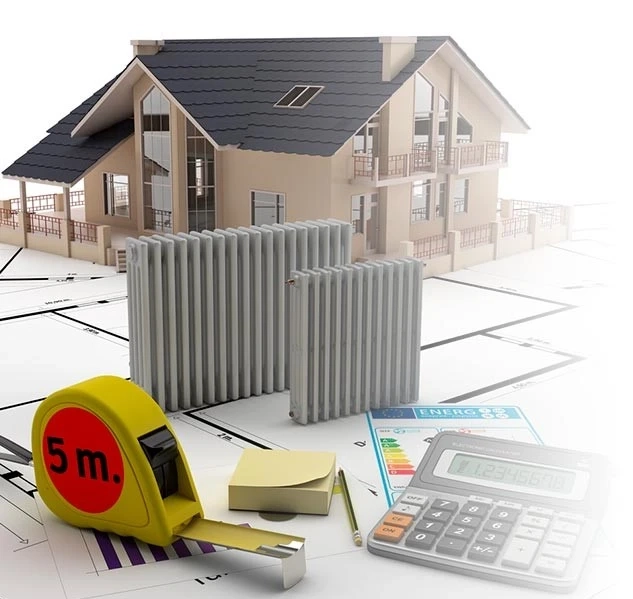The Manual J calculation can help determine the correct size for an HVAC unit being added to a building. Knowing the Manual J calculation might benefit you if you work in HVAC or are interested in a career in the trade. HVAC designers and contractors use the Manual J calculation for each building or home they work on, so being familiar with it can make getting started in HVAC easier. In this article, we define what the Manual J calculation is and explain how to use it.
What is the Manual J calculation?
The Manual J calculation is a formula that identifies the HVAC capacity of a building. It might also be called an HVAC load calculation because it describes the size of equipment needed to heat and cool a building. The primary users of the Manual J calculation are HVAC installers, technicians and contractors. The purpose of the Manual J calculation is to determine the size of an HVAC unit that the installer needs to properly service a building without using excessive energy. Because a Manual J calculation can be complex, many HVAC professionals use Manual J calculators to reach an estimate for their clients.
What happens during a Manual J calculation?
During a Manual J calculation, contractors take measurements and perform tests to find the HVAC capacity of a building where they're installing a new HVAC unit. The number and type of tests that a contractor might perform depend on the building they're working in, as something like a large office building has different needs than a single-family home or apartment. Some tests an HVAC contractor might perform include a blower door test and measuring the effectiveness of insulation in rooms like attics or basements.
The tests and measurements an HVAC contractor performs to prepare for and conduct a Manual J calculation take into account how many windows or entryways are in the building, how many people use the building and what other appliances in the building can produce or absorb heat. Contractors then use software and manual calculations to determine the HVAC load capacity of the building, or how much HVAC power it needs to heat, cool and maintain temperatures.
How to perform a Manual J calculation
Here are a few steps for performing a Manual J calculation to strengthen your HVAC technician skills and ensure you can determine the right equipment for each installation:
Measure the square footage of the building
Determine the square footage of the building you're working in. If you have access to the building's blueprints, you might find this information there. Otherwise, you can find the square footage of each room in the building individually by finding the area of each and then adding all of your solutions together. During this process, you can omit any areas of the building that might not need heating or cooling, such as a garage or basement.
Evaluate the building's insulation
Inspect the forms of insulation used in the building. This includes insulation material installed in the walls, floors or ceilings, which contractors can typically discern from blueprints or construction plans. Here, contractors also consider external factors that can affect how effective a building's insulation is, such as the size and placement of windows, sun exposure, and airtightness. They might also consider how many people live or work in the building, as having people inside can influence how much an HVAC system needs to heat or cool a space.
Consider how the building uses its space
Determine how often each space might need heating or cooling. This can be based on several factors, including how many people are in the space consistently or whether there are any other appliances in the space that might produce heat, such as an oven. Knowing how clients use a building can inform contractors about their specific need for HVAC power, especially in cases where the building might need less HVAC power than anticipated.
Determine the BTU of each element
Find the BTU values for the elements that indicate the building's HVAC needs. BTU stands for British Thermal Unit and measures how much heat will raise the temperature of something. In HVAC, contractors assign BTU values to variables that they use in the Manual J calculation, like people and openings in a building, to help illustrate the HVAC power needed to heat and cool the building. They achieve this by following the rule that recommends adding one ton of HVAC equipment per 12,000 BTU in a building.
Here are a few standard rules for BTU when preparing for a Manual J calculation:
1 person = 100 BTU
1 window = 1,000 BTU
1 entry door = 1,000 BTU
Calculate the HVAC load
Find the total HVAC load by plugging your measurements into the Manual J calculation. The formula for the Manual J calculation requires separate functions, which might look like this:
(House surface in square feet) x (height of the ceiling)
(Number of occupants) x 100 BTU
(Number of exterior doors) x 1,000 BTU
(Number of windows) x 1,000 BTU
After performing these calculations to determine square footage and total BTU, you can add your solutions together to determine the HVAC load. For example, if a house is 2,000 square feet with ceilings that are 10 feet high and has six occupants, 12 windows and three doors, the Manual J calculation can look like this:
2,000 x 10 = 20,000
6 x 100 BTU = 600 BTU
12 x 1,000 BTU = 12,000 BTU
3 x 1,000 BTU = 3,000 BTU
20,000 + 600 + 12,000 + 3,000 = 35,600 BTU
In this example, the HVAC load for the home is 35,600 BTU, which would call for an HVAC unit of 2.97 tons.
0


